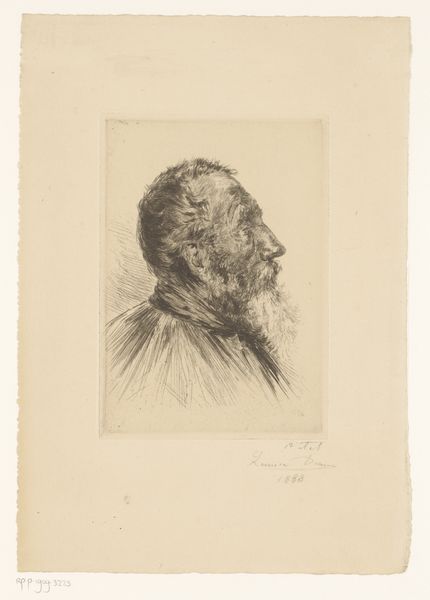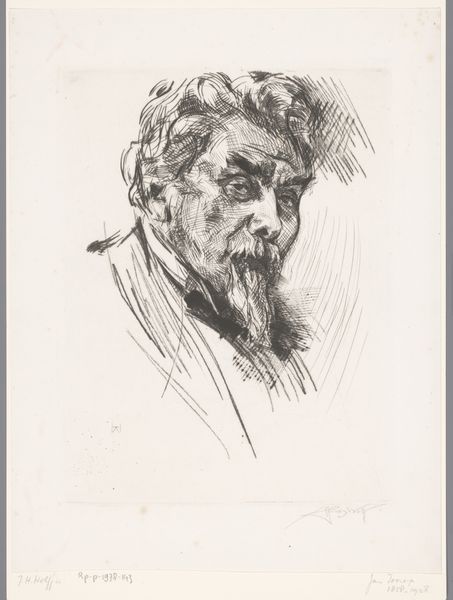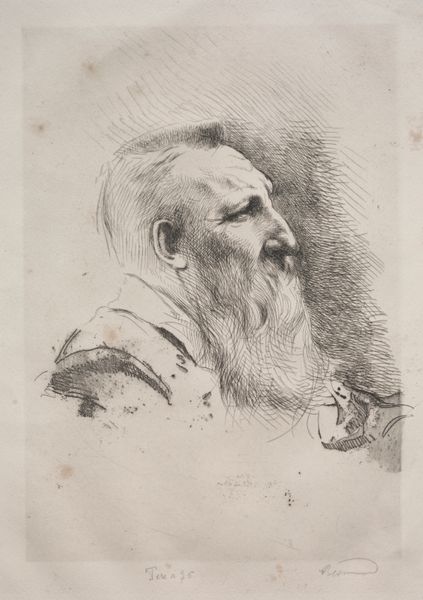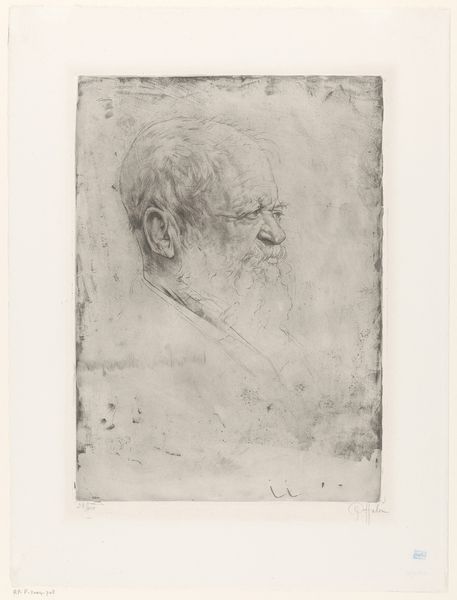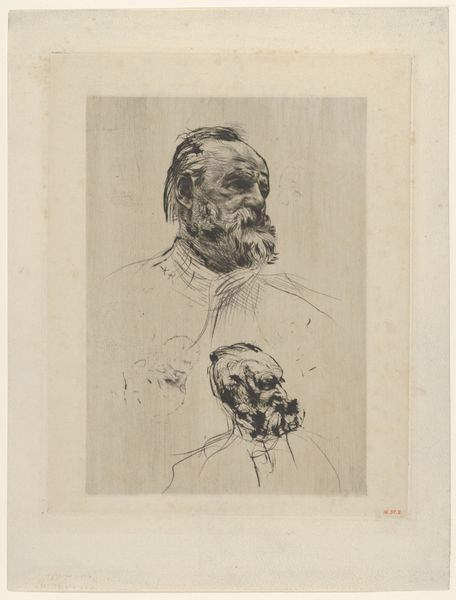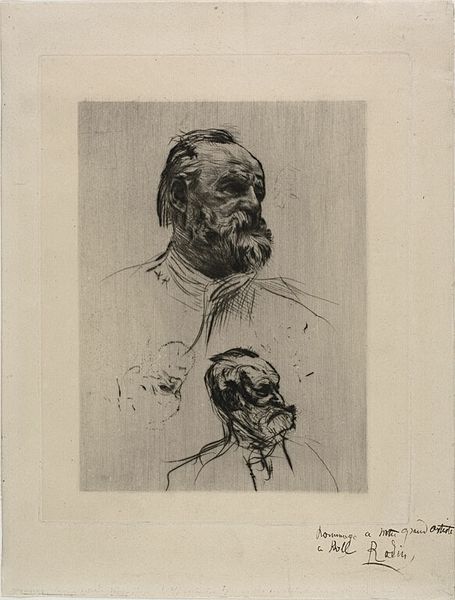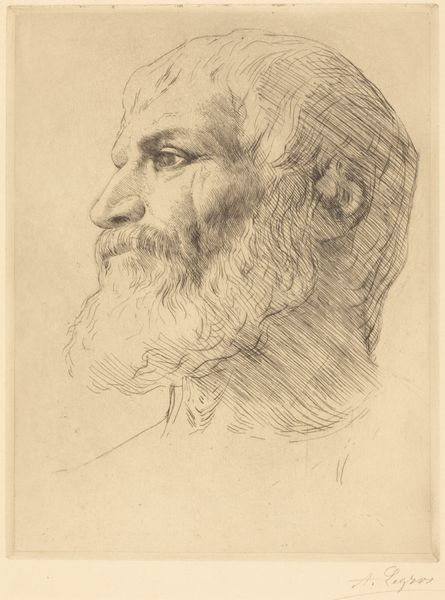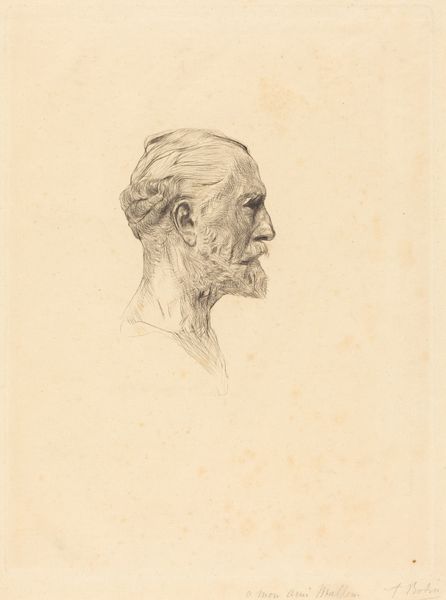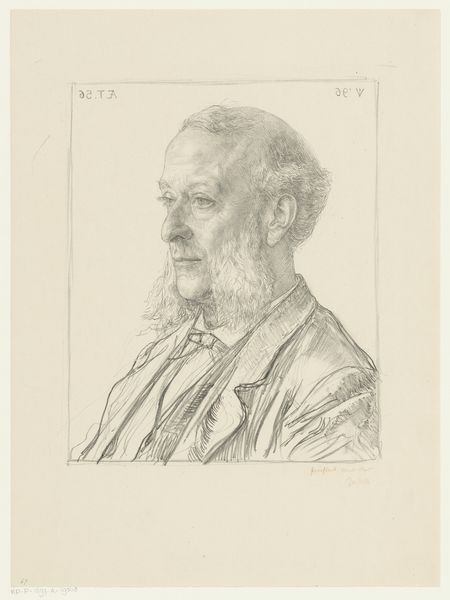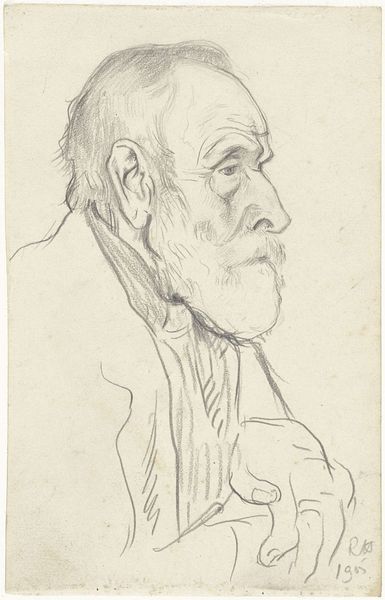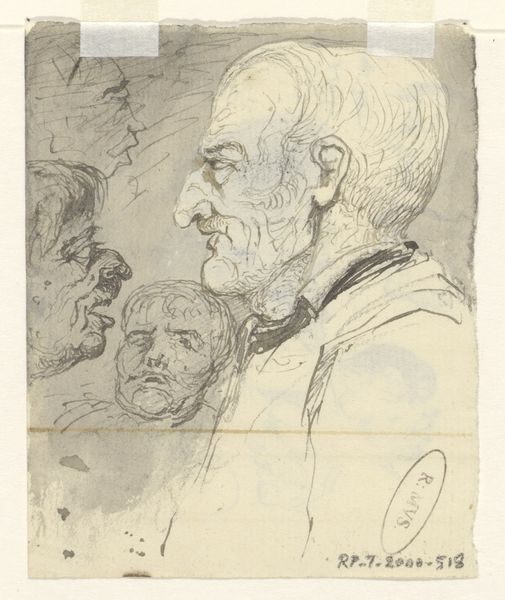
Copyright: National Gallery of Art: CC0 1.0
Auguste Rodin created this print of Victor Hugo at some point in the late 19th century, using drypoint on paper. It depicts the famous French novelist and poet in two poses, capturing not just his likeness, but also something of his spirit. The image creates meaning through the visual codes of portraiture, connecting Hugo’s image to the cultural and political landscape of France. Consider Hugo's role as a literary figure and political activist. His writings often challenged social norms, advocating for the rights of the oppressed and marginalized. Rodin, as a contemporary, would have been keenly aware of Hugo's cultural significance. This portrait can be seen as a commentary on the social structures of their time, with both Rodin and Hugo pushing boundaries and challenging conventions through their respective art forms. Understanding this work requires historical research into the lives and works of both Rodin and Hugo, as well as the socio-political context of 19th-century France. Only then can we appreciate the full depth and significance of this image.
Comments
No comments
Be the first to comment and join the conversation on the ultimate creative platform.


